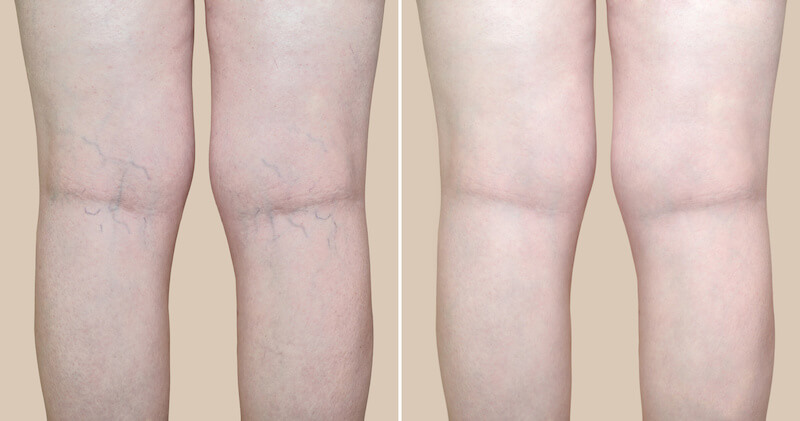
Vascular Lesion Treatment in Wrocław, Poland – Nowa Estetyka Medical Center
Laser Vascular Lesion Treatment Using VPL Laser – How Does the Procedure Work?
The VPL (Variable Pulsed Light) laser, unlike the older IPL technology, emits light beams with a broad spectrum, which can be individually tailored to the patient’s skin tone and the depth of the vascular lesions.
The VPL laser operates based on the principle of photothermolysis. The emitted light targets hemoglobin, a protein located in red blood cells, where it is absorbed. The absorbed light energy is converted into thermal energy, heating the water in the blood vessel tissues. This causes the water to evaporate, drying out the cells, leading to the sealing and eventual collapse of the blood vessel walls. As a result, unwanted capillaries are gradually absorbed by the body and become invisible.
Vascular Lesion Treatment with VPL Laser – Additional Benefits
In addition to removing vascular lesions, the intense heating of deeper skin layers also helps eliminate unsightly chronic redness, which can be triggered by factors such as drinking hot beverages or temperature changes.
Moreover, the controlled tissue damage activates the fibrocytes—cells responsible for collagen production. Fibrocytes increase water retention and rebuild connective tissue. The surface layers of the skin become tighter, providing a long-lasting effect of facial skin rejuvenation.
Thanks to a wide array of interchangeable heads, the VPL device allows us to direct laser therapy toward:
- Epilation (permanent hair removal)
- Pigmentation removal
- Reduction of facial vascular lesions, removal of spider veins on the legs
- Targeted skin rejuvenation therapy (laser photorejuvenation)
The VPL laser is also effective as a supporting method in acne treatment.
What Happens During a Vascular Lesion Laser Treatment?
Before the procedure, the aesthetic medicine physician will have a consultation with the patient to gather important information for the treatment. They will then assess the skin’s condition, the number of vascular lesions, and the depth at which they are located. To maximize comfort during the procedure, the patient’s skin is cooled with a gel before the laser treatment. Additionally, after each laser pulse, the device cools the skin to minimize discomfort.
Once the appropriate laser light parameters are set, the doctor begins the treatment. After the laser session, the skin may be slightly red and swollen—this effect typically lasts a few to several hours, and rarely a few days.
Laser Vascular Lesion Treatment – Contraindications
Laser vascular lesion treatment is not performed on individuals with vitiligo, a tendency for scarring, or untreated infections in the area to be treated. Laser therapy is also contraindicated for pregnant women and those who are breastfeeding.
One week before the procedure, patients should discontinue medications that affect blood clotting (such as aspirin) and retinoid-based medications. Additionally, any products containing photosensitizing herbs should be stopped 7 days before the treatment.